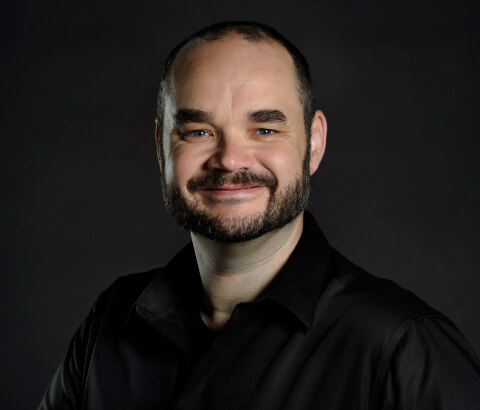State of the art methods for measuring mobile and digital marketing
Columnist Aaron Strout sits down with Chuck Hemann, a senior analytics lead at his company, to discuss best practices for mobile and digital measurement and ways to improve your analytics program.

We live in an age when all things are measurable — or at least that is the expectation. How long we sleep, our daily steps, our bodies’ sugar levels, the number of ads we view, the amount of media we digest and so on. In the world of marketing, it’s even more evident, as marketing leaders look at number of apps downloaded, time on site, click-throughs, shares, impressions, open rates, leads generated and so much more. But what are the right measurements?
As someone who’s grown up in the world of digital marketing, I’ve kept my eye on the evolution of mobile and digital metrics and how they impact business. But as the complexities of measuring and modeling marketing activities increase, it’s critically important to seek out experts to help us focus on the right metrics.
Fortunately, I happen to work with someone who has plenty of experience in the world of mobile and digital analytics. Chuck Hemann not only is one our senior analytics leads, but is also co-author of a book titled, “Digital Marketing Analytics” (a second version of which is expected in 2018). In addition to his time at W2O (our employer) and several other global agencies, Hemann most recently spent three years leading digital analytics at tech giant Intel.
To better understand the current landscape, I sat down with Hemann to discuss the state of mobile and digital measurement as well as his recommendations on best practices for companies wanting to hone their measurement efforts.

W2O’s Chuck Hemann
Q: You recently spent three years working for Intel, bookended by time at W2O Group. What key lessons did you take away from your time at Intel?
Before tackling the meat of your question, Aaron, I think it’s important to say that I wouldn’t trade that experience for anything in the world. It taught me so much about how big companies operate that I can now bring back to our agency. I think there are at least six things I’ll take away from my time at Intel.
First, never underestimate the importance of achieving stakeholder buy-in. It isn’t enough that you think your idea is good. The only way ideas gain traction inside of big companies is if there are multiple people advocating for them.
Second, incremental progress isn’t a dirty phrase. It takes a long time to make changes at a Fortune 50 company, so set expectations appropriately.
Third, if you happen to be working within a center of excellence (COE), be sure you come to the party with a stakeholder-first mindset.
Fourth, there is no such thing as being over-communicative. It’s easy to get lost in big companies, so shout about your success stories and needs as often as it might make sense.
Fifth, do not be discouraged if your big idea doesn’t get adopted immediately. The best things often take time to simmer.
Lastly, the promise of bringing together paid, earned, shared and owned (PESO) data into a cohesive story about our audiences or the performance of our marketing campaigns holds tremendous promise.
Q: US adults spend over 12 hours a day consuming media, according to eMarketer. Roughly 50 percent of that time is spent on digital media and nearly 3.5 hours of the 12 are spent on mobile. Is there a way to measure these interactions (at least digital) in a unified fashion?
The digital analytics industry has a long way to go in this area, unfortunately, and it’s something many industry associations recognize. Many of the ways we “track” people on desktop don’t translate well to mobile, and some of the metrics most commonly tracked for desktop don’t make a lot of sense.
All of that said, I’m typically a big proponent of not allowing a single KPI to rule them all — meaning, it’s far better to understand the objectives of the program and how it will be executed, and then establishing the KPIs as opposed to the KPIs dictating the tactics. However, if you are looking for a framework to evaluate mobile performance, we typically look at it through the lens of mobile performance effectiveness, efficiency and impact.
Q: Earlier you mentioned PESO analytics. Can you describe what that means? And how does it relate to mobile?
PESO analytics means bringing together the right data from paid, earned, shared and owned sources to either inform a campaign (e.g., tell us more about our target audience, inform content development), optimize a campaign (are we tracking against key KPIs) or measure a campaign.
Some of you who might be reading this might be wondering, “Is he going to mention attribution modeling?” Yes, attribution modeling is one manifestation of the PESO analytics approach, but that is very specifically focused on evaluating campaign effectiveness. An important thing, to be sure, but only a third of the equation. We need to be pulling together these data sources far more often to inform our understanding of audiences and to inform the development of content, among other use cases.
Q: Measurement of digital media is top of mind for many companies, so how does the PESO analytics concept help us measure more effectively?
By bringing together the normally disparate data sources, we can absolutely leverage the power of attribution modeling to understand the impact one channel has on another, and then ultimately the impact our campaign had on whatever bottom-line metric we are tracking against.
It also helps us build effective media mix models, or what we call at W2O, ROMI (return on media investment) models. If we accurately understand the spend, potential reach, potential engagement, historical benchmarks and goals across PESO, we can build some extremely accurate ROMI models that lead to effective and efficient marketing spends.
Q: Better measurement is clearly one of the key differentiators of PESO analytics, but what are some others? And how does it impact mobile?
I mentioned this above, but there are at least three key differentiators of PESO analytics. First, by bringing together the web, mobile, search, social, earned, and media data, we can develop an even greater understanding of how our target audience behaves, what they want to consume, and how they like to hear from brands like ours. There is so much available data about our audiences across PESO — it really is lazy marketing to rely solely on third-party research or stale segmentation models.
Second, if we’re bringing together data and insights across PESO about what content resonates, we can more effectively build customer journeys.
Third, bringing together data across these various platforms allows better optimization. When we optimize on a channel-by-channel basis, we will likely break the customer journey in unexpected ways that only become clear once we’re evaluating overall success.
Q: If brands wanted to start leveraging PESO analytics, what are some of the things they need to consider?
Sure, some of these I’ve written about before, but I think they are worth mentioning here. I think there are at least five things to consider.
- Make sure that your marketing team isn’t organized by channel. Organization by channel promotes execution in a silo, promotes research in a silo, promotes measurement in a silo. Organization by audience allows for campaign planning with a customer journey mind, promotes research on the audience, and promotes measurement holistic measurement.
- Ensure the data across PESO is collected, housed and organized in an accessible way. W2O has its own data warehouse that helps facilitate measurement in the way that I am describing above, and if you don’t, you really should consider starting down that path.
- Make sure that the analytics team sits under one umbrella, as opposed to sitting in a silo. Similar to the marketing organization point I made above, having an analytics team within one group across PESO helps to achieve many of the things I listed above.
- Ensure you have a proper communication channel between the marketing and analytics teams to ensure complete understanding of the campaign and what’s possible from the analytics standpoint.
- Do not fall into the trap of having a single KPI to rule them all. Yes, having a single KPI does make it easier to evaluate whether the marketing program has succeeded — every good marketing practitioner knows that the success or failure of a program is far more complicated than that.
Q: Any closing thoughts?
The only closing thought is that there are probably at least two groups of people who are reading this article. The first group is probably thinking, yeah, this is fairly self-explanatory and we are already doing it. That certainly might be true, but you would definitely be the unicorn in this industry. If you are doing it, I would absolutely love to hear how you are executing.
The second group likely recognizes that this is an important way to organize your analytics and insights program, but is daunted by the steps required. Like anything else in this world, a crawl, walk, run approach makes the most sense. Focus on the operational components first, then data gathering and talent, then the process, and then think about ways to go big. Treat it as a process. Remember, all good ideas take some time to simmer.
Opinions expressed in this article are those of the guest author and not necessarily Marketing Land. Staff authors are listed here.
Marketing Land – Internet Marketing News, Strategies & Tips
(21)



